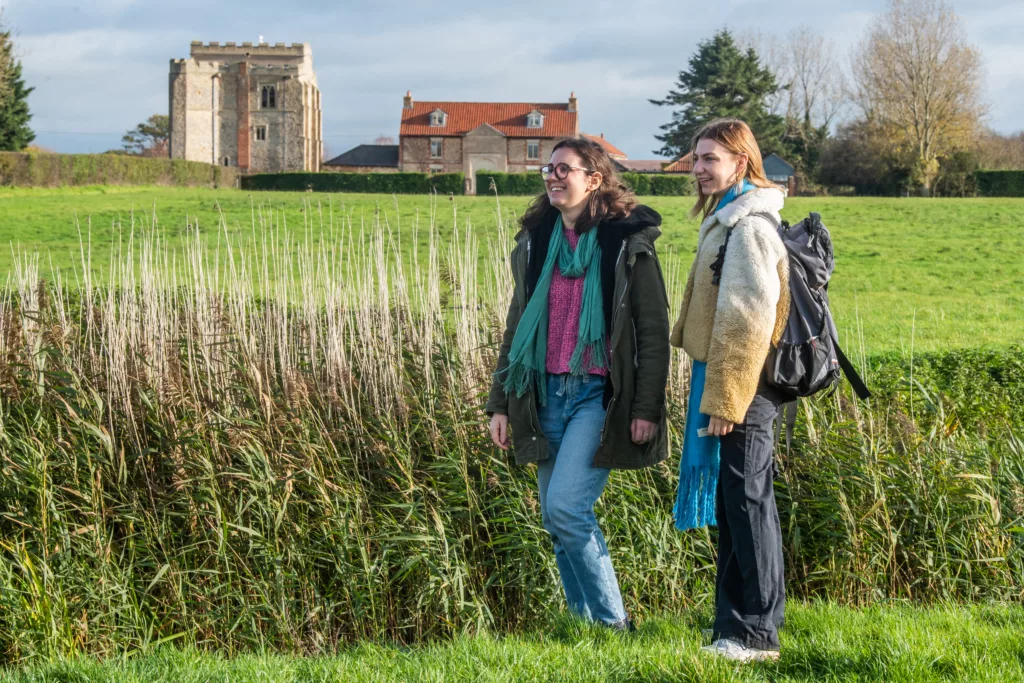Walk through ‘Norfolk’s Holy Land’, so called by 19th century cleric and writer Augustus Jessop, due to numerous priories and abbeys dotted along the Nar Valley. Ancient Romans, Danes and various religious sects made their homes on the isolated little islands surrounded by a sea of marsh; ‘Pentney’ means ‘Penta’s Island’. A starkly beautiful place, for centuries this landscape of quiet power has inspired philosophical thinking, ideal for pondering the meaning of life on winter walks. Around 1130 an Augustinian priory was founded here, by Robert de Vaux who came to England with William the Conqueror. For centuries it was a prosperous place of teaching and farming, although not without political upheavals. It was closed during Henry VIII’s Dissolution of the Monasteries and today only the fine gatehouse survives, although Barnack stone from the ransacked priory was used in many local buildings.
Pop into the village and have a look at the 14th century Pentney Wayside Cross, near St Mary Magdalene’s Church. Symbols of Christian faith, such crosses marked the way for medieval voyagers finding their way through unknown terrain. Before this became a churchyard, even further back in the 9th century, someone hid a hoard of exquisite silver brooches here. Likely to be a personal jewellery collection, for hundreds of years the six intricate brooches lay in secret under the earth until they were uncovered by gravedigger William King in the 1970s. Skilfully worked with animal and plant motifs, the treasure trove is now displayed in the British Museum.


